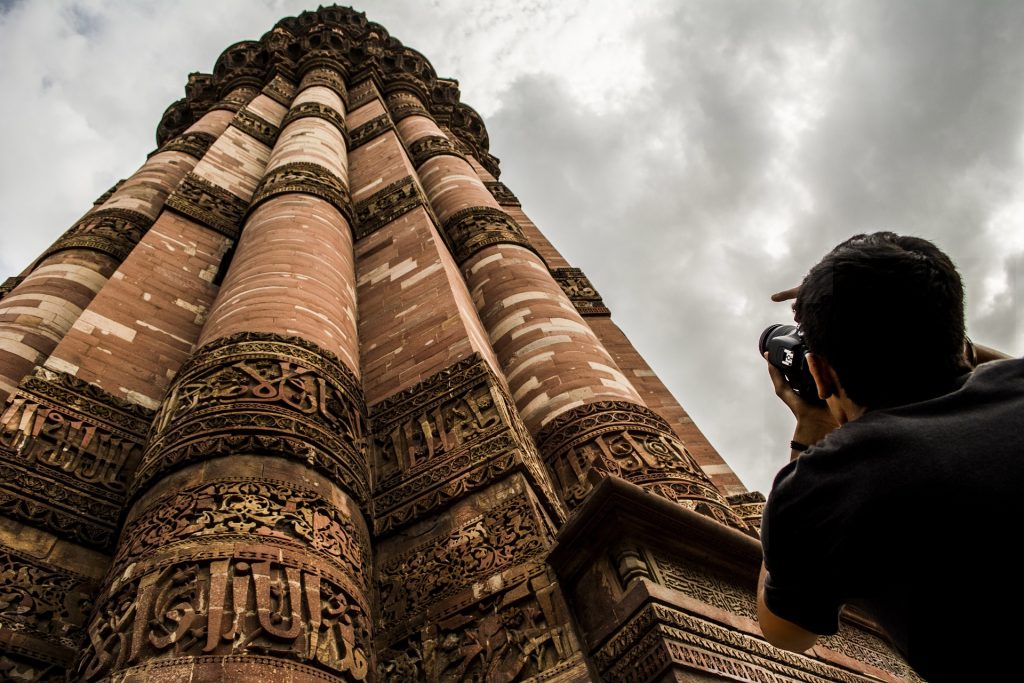A towering 73 feet tower built by Qutub-ud-Din Aibak in 1893 is referred to as Qutub Minar. It was built to signify the Muslim dominance in Delhi after the defeat of the last ruler of Delhi. It is the highest tower in India, which is builtwith projecting balconies along with five storeys. The first three floors of this monument are built of red sandstone and the last two are of sandstone and marble.

Though the construction of the monument was started by Qutub-ud-Din Aibak, he only went on to complete the basement. It was his successor who took over the constructionIllutimish who went on to construct three more stories. Towards the foot of the tower you will come across the Quwwat– Ul-Mosque, which is the first mosque that is built in India. An interesting piece of information points that it is built from the materials that were bestowed by demolishing 27 temples. There is a 7m iron pillar in the courtyard of the mosque, and it is stated that when you encircle it with your hands while standing with your back, any wish you are bound to have is fulfilled.
One fact is sure that this monument does have its own share of controversy. Some people believe that it is erected as a token of the Muslim rule in India, while for the others, it is a minaret to the muezzins for offering prayers. But one thing is undisputed as it is one of the finest monuments in India and to some extent in the world as well. The architectural style from Aibak to Tuglak are in sharp contrast. For the matter the relief work along with the construction of material used differs considerably. The construction of the mosque was completed in the year 1197. There is a diameter of 14.25 at the base with a height of 72.5meters and 2.75 meters on the top.
As far as qutub minar timings are concerned, it is open from sunrise to sunset. The general timings are from 7 in the morning to 5 in the evening. It has been declared as a world heritage site by the UNESCO and the design is modelled on the minaret of Jam. In terms of architecture, the towers were in operation, much before the Turks came to India, but there is no evidence to prove this fact. The style of the tower is basically Iranian and before 1974, the general public was allowed access to the top of the tower through a narrow staircase. On December 4th 1981, close to 45 people were killed when there were 300 to 400 people in the Minar, which was followed by an electricity failure which plunged the monument into darkness. The sad part is that most of the victims were children as they were allowed free access to this monument during Fridays. In the days to come, the public access to the monument has been stopped.
It is located in the Mehrauli region of Delhi and it is open all the seven days of the week. The entry fee for the Indians is Rs30, while for the foreigners they have to cough up Rs500. For kids below 15 years, entry is free to this monument.
So, the next time if you are in Delhi, ensure that you do pay a visit to this architectural masterpiece
